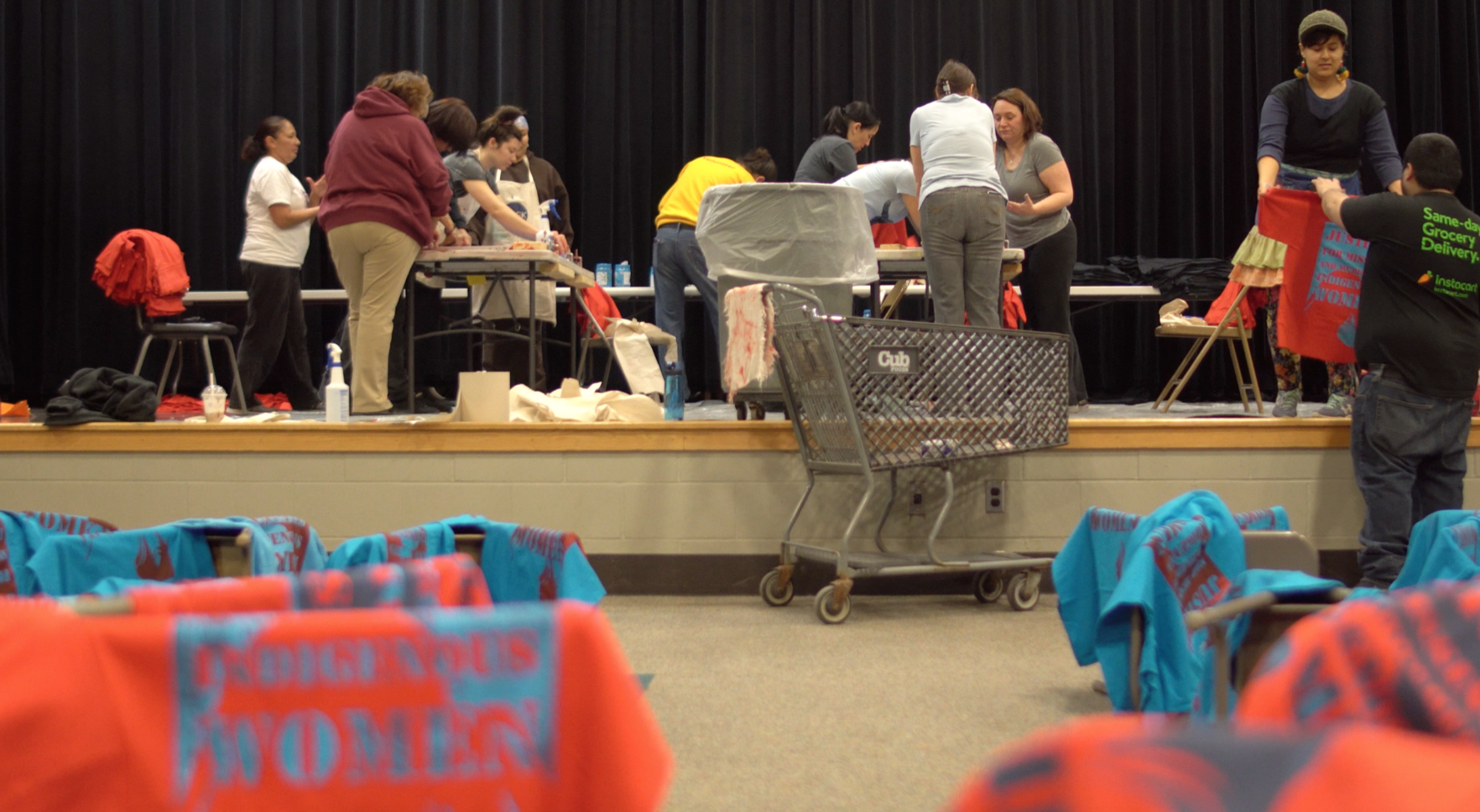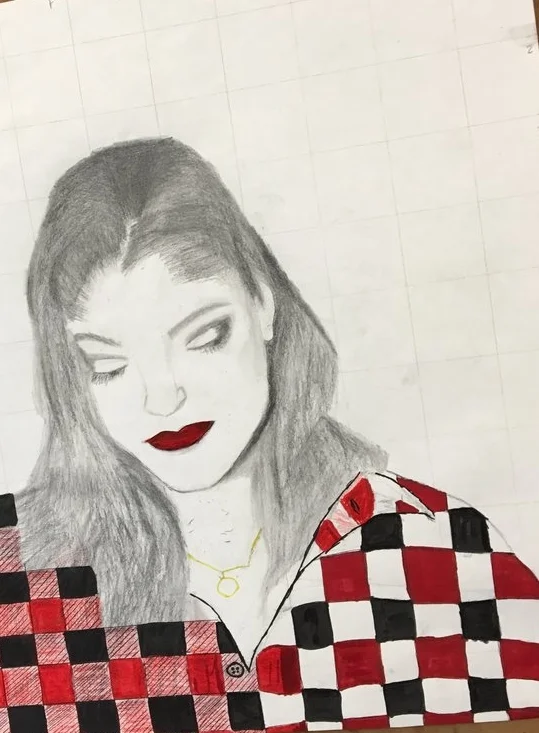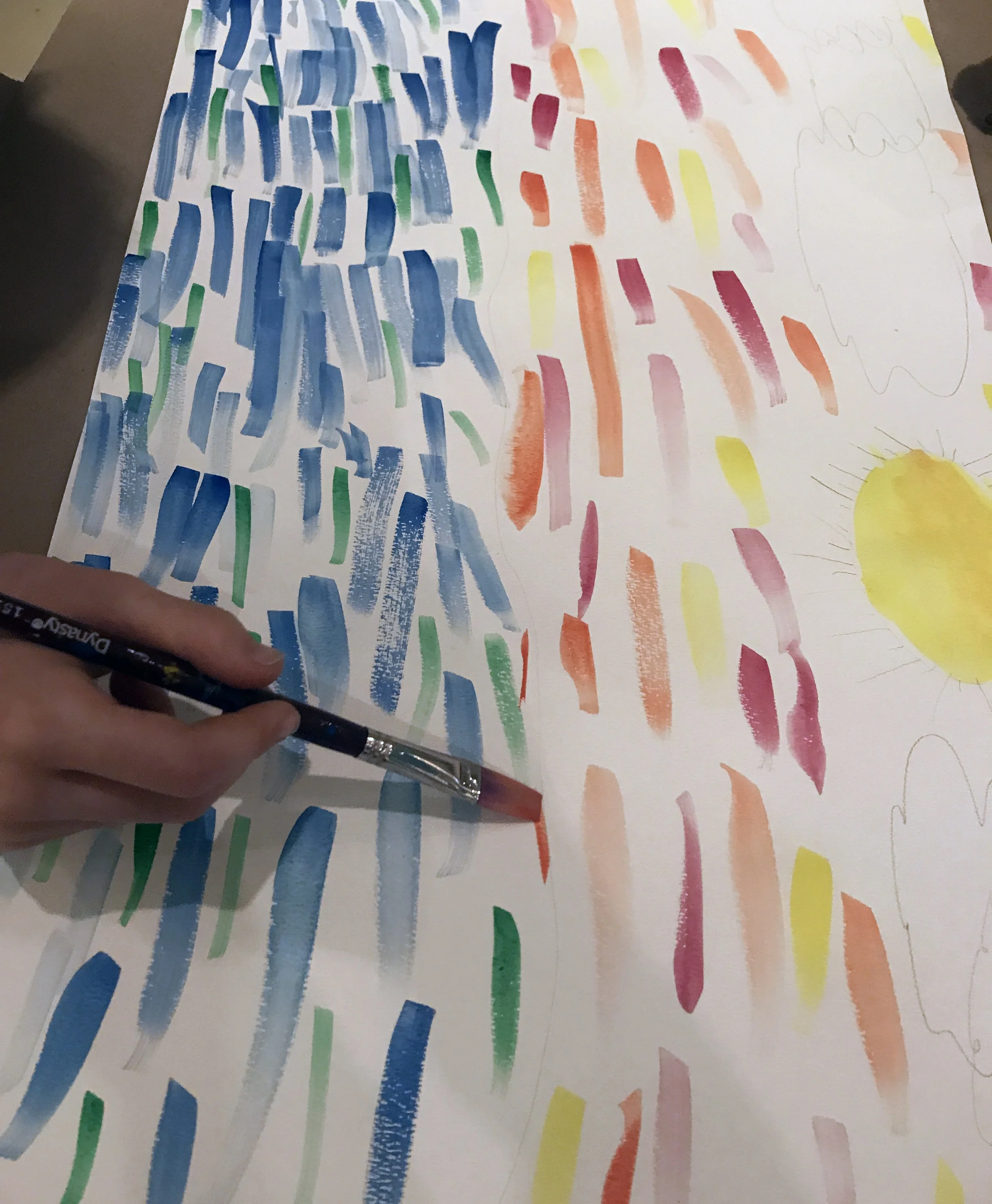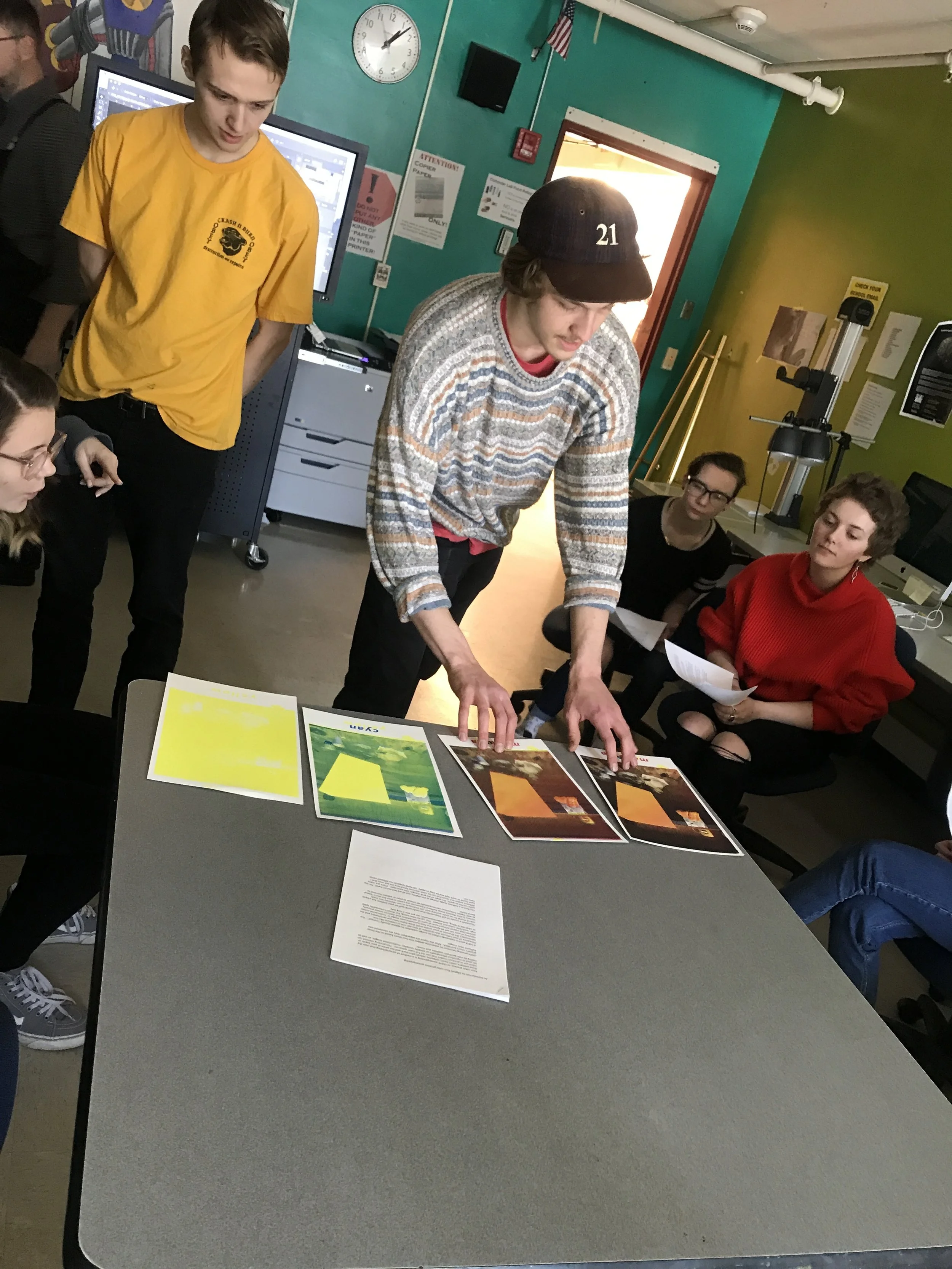REINVENT: obstruction-based experimental projects
School/Teacher/Classroom or Arts Organization/Mentor: Kathryn D’Elia
Grade Level or Age of Participants: High School - Grade 12
MCAD Teaching Artist: Abbey Edmonds
Number of Students: 17
Visual Arts Content or Standards
5.9.2.2.1 5. Visual Arts HS 2. Create 2. Generate and develop original artistic ideas. 1.Collectively or individually apply inquiry methods of observation and research to investigate an idea.
5.9.2.2.2 5. Visual Arts HS 2. Create 2. Generate and develop original artistic ideas. 2. Explore and plan themes, ideas, concepts or styles in preparation for an artwork.
5.9.2.3.1 5. Visual Arts HS 2. Create 3. Create original artistic work. 1. Synthesize visual literacy strategies and conceptual intent to create artwork for a specific purpose.
5.9.2.3.2 5. Visual Arts HS 2. Create 3. Create original artistic work. 2. Balance freedom and ethical responsibility in the use of images, materials, tools, and equipment during art making.
5.9.2.4.1 5. Visual Arts HS 2. Create 4. Revise and complete original artistic work. 1. Engage in constructive critique with peers, then reflect on, revise and refine works of art to improve one's original artistic intent.
5.9.3.6.1 5. Visual Arts HS 3. Present 6. Make artistic choices in order to convey meaning through presentation. 1. Analyze, critique, and justify artwork in an artist statement for a collection or portfolio presentation.
5.9.4.7.1 5. Visual Arts HS 4. Respond 7. Analyze and construct interpretations of artistic work. 1.Construct multiple interpretations of an artwork.
5.9.4.8.2 5. Visual Arts HS 4. Respond 8. Evaluate artistic work by applying criteria. 1. When encountering artwork(s), synthesize one's own evaluation of artwork(s) with a different evaluation of the same artwork(s).
Overview of Project
Students will choose one previous art piece to reinvent through the act of applying a specific set of obstructions. Through the use of a formal, written proposal, students will hold themselves accountable to following their own directions while conceptually and/or technically recreating a piece for critique.
“Big Ideas”/ Essential QUESTION
How can limitations encourage experimentation and creativity within students?
Student Outcome Objectives
Students will:
1. Display knowledge of terminology and principles/methods of design through a written proposal
2. Apply various techniques to change desired outcome of an artwork
3. Synthesize and analyze the success of process through group critique
Prior Knowledge
Students will need an existing artwork to reference along with a background of knowledge regarding technique and principles of design.
Lesson Preparation Timeline
Proposal/Assignment introduction
One supervised/guided work week after proposal approval
Group Critique
Examples of Artwork
Michelangelo Merisi da Caravaggio
Judith Beheading Holofernes
Oil on canvas
57”x77”
1599
Artemisia Gentileschi
Judith Slaying Holofernes
Oil on canvas
78.33”x64.13”
1620
Various MCAD work from Fall 2016 Operative Drawing
Ryan Travis Christian
DUMBER DAYS
7”x10”
graphite on paper
2018
Ryan Travis Christian
DIRTY BEACH
7”x10”
graphite on paper
2018
Melissa McCracken
Ex-Factor
Oil on canvas
31”x41”
2017
Abbey Edmonds
Untitled
Charcoal on paper
36”x48”
2017
Abbey Edmonds
Untitled
Charcoal on denril
18”x24”
2017
Assessment
Quality work will be defined in concrete and conceptual terms. The most concrete thing to first assess is whether or not students applied all obstructions to the new work, along with how accurately they applied the obstructions. The goal of this assignment is to break boundaries and encourage experimental growth. The level at which students stray from their comfort zones will be assessed as a mode of effort and ambition. Formal assessment will be taken into account regarding a successful understanding of the principles of design.
A group critique centered on student dialogue will be assessed as well to evaluate the students’ understanding of each other’s work. Correct vocabulary and participation will be noted.
Materials
Materials will vary depending on each student’s individual proposal. All materials needed can be found in the classroom or brought from home. Specific requests may be subject to purchase.
Learning Activities and Timing
1. Day 1: The lesson will be delivered through an image presentation shown at the start of class. There will be specific examples of work shown from diverse periods and in different mediums.
2. Deliver three sets of obstructions from students to choose from.
A: Must include a 3-dimensional aspect
Create a piece with the opposite meaning/theme/feeling/imagery
Choose a different medium/materials
B: Create a series (4 or more)
Change your scale by either doubling in size or reducing to half the size
Use a unique tool: no brushes, pens, pencils, crayons, etc.
C: Reference a historical piece of art in either composition, technique, or narrative/subject matter
Choose a different surface to work on
Use a unique tool: no brushes, pens, pencils, crayons, etc.
3. Introduce the written proposal where students will describe the obstructions chosen along with intent for the new project. Instructions are as follows:
Write 1-2 paragraphs:
1) Describe the piece you are reinventing
2) List the obstructions that you have chosen
3) Explain why you have chosen this specific group of obstructions. (There is no right or wrong answer.) Did they seem easier? More difficult? Exciting?
4) Give a loose description on your intentions with the work. Even in the most experimental work, there are themes and structures. Does this follow a common practice for you? Will it address a problem or other contemporary issues/themes? Is it simply that the act of making is indulgent? Give context so that this experimental work operates within boundaries.
4. The proposals will be submitted for approval before students begin working.
5. Days 2-3: work days
6. Group critique to follow these 5 rules for critique:
1. Immediate Response: What are your immediate responses? These are uncensored, irrational, un-self conscious impressions of the work-what you notice first, what stands out, and how it affects you.
2. Objective Description: Describe the work as if to someone who cannot see it.
3. Formal Complaints and Formal Praise: Look hard at formal matters in the work, including presentation, material choices, composition, draftsmanship, line quality, palette, and placement in space.
4. The Story It Tells: Does the work tell a story? What associations does the work evoke? Is there a title? Try naming the work with a simple noun, then with a phrase.
5. The Work in the World: How does the work connect to the rest of the world, and how does it connect with other works of art?
TEACHING ARTIST REFLECTION
A highly anticipated problem is that of frustration. The goal of this lesson is to push students to experiment and operate under restrictions, which may result in polarized reactions of high creativity or a stifled imagination.
This lesson capstone’s the end of the semester and capitalizes equally on conceptual and technical skill to prepare students for college-level portfolios and assignments. The written proposal finesses writing skills and clarity when planning future work.
An assessment will be conducted both in person and via video recording to assure the lesson was delivered clearly and confidently.





















